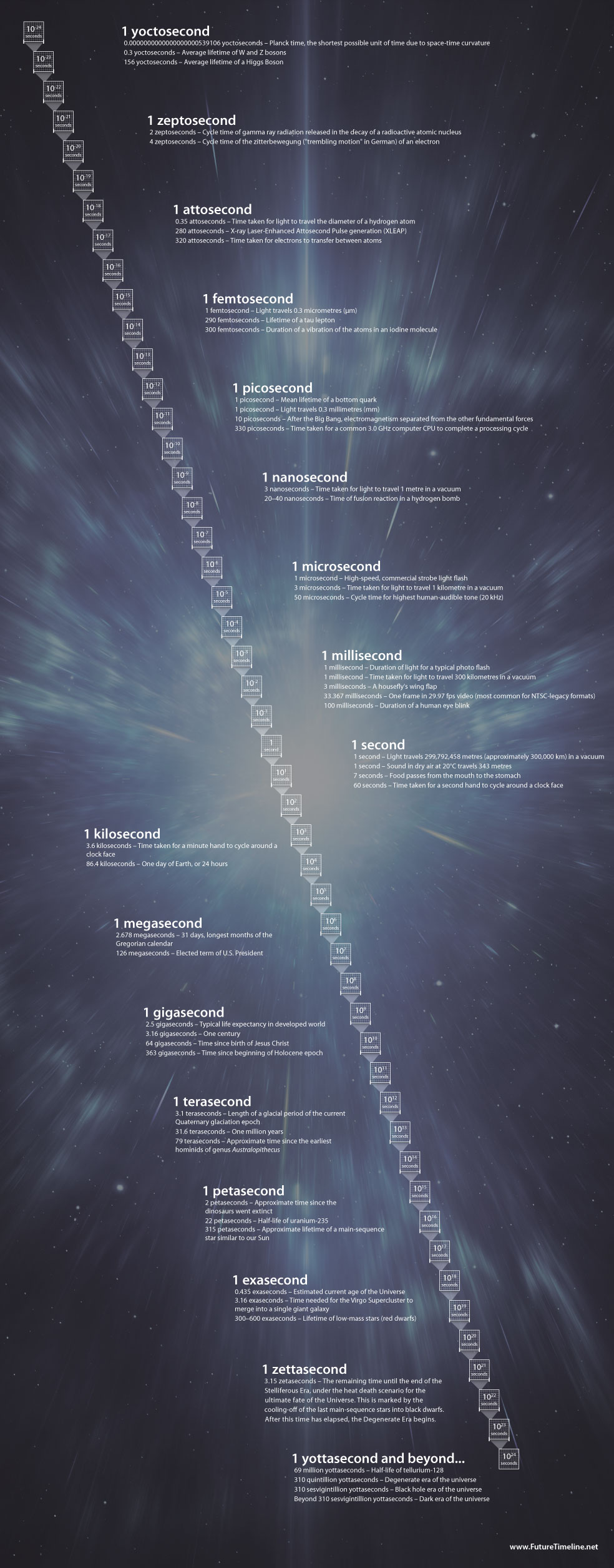
Units of time – orders of magnitude The diagram here shows different measurements of time, from a yoctosecond (extremely short) to a yottasecond (extremely long), with a midpoint of one second. In total, this covers 49 orders of magnitude. However, many additional time spans can be found below and above these units. For example, Planck time is 0.0000000000000000000539106 yoctoseconds – or 20 orders of magnitude shorter than a yoctosecond – and theorised to be the smallest time period that is physically possible, due to space-time curvature. At the other end of the scale are unimaginably vast lengths of time pertaining to the evolution and ultimate fate of our universe. The time until we reach the black hole era, for example, is a gargantuan 83 orders of magnitude longer than a yottasecond. In the early 21st century, scientific instruments are becoming very good at detecting extremely brief or rare events. Some examples include the appearance of the Higgs Boson and the movement of electrons. In 2020, the world's most powerful neutrino detector will begin construction and could provide the first glimpse of proton decay when it starts operations. Likewise, the next generation of telescopes could reveal new clues about the extremely distant future of our universe. Click the image to view a larger version.
Sources: Orders of magnitude (time), Wikipedia: New laser method provides ultra-fast observations of electrons, Future Timeline Blog:
Posted: 29th December 2019. Last updated: 29th December 2019.
If you enjoy our content, please consider sharing it:
|







